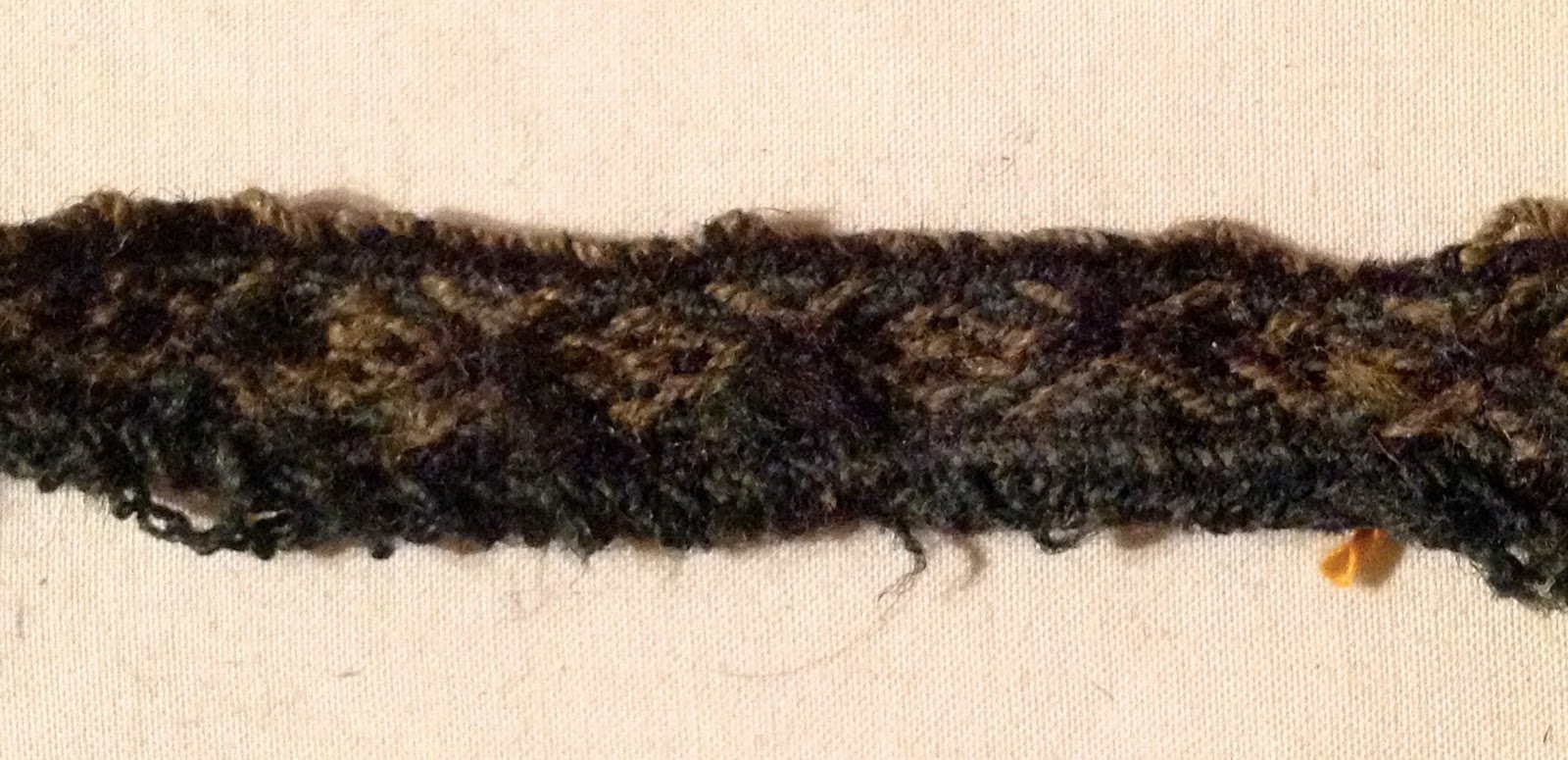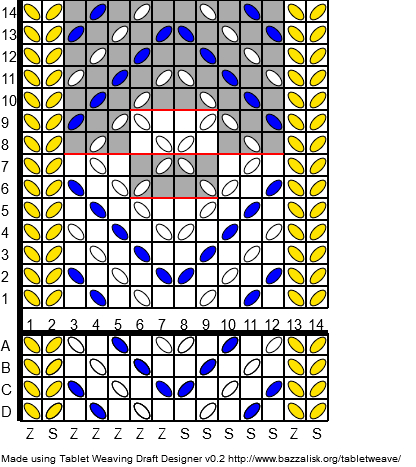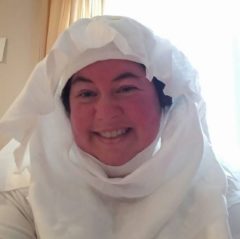This piece is one of my favorites, not just because it’s attractive and easy to weave, but it’s one of the oldest ones on record!

It was found in 1991 in the Kernverwasserungswerk part of the salt mine in Austria. The salty environment kills single-celled bacteria that would cause the decomposition of organic materials. It is currently housed at the National History Museum in Vienna.
The archaeologists determined that the date for the piece is somewhere between 800 and 400 BCE (before current era). You read that right–FOUR HUNDRED BC! So sometime between the beginning of the Etruscan civilization and the Egyptians overthrowing Persian rule, some iron age miner dropped some woven fragments in a salt mine in Austria. Or really, one of several miners who left behind at least six pieces of tablet weaving. The oldest of the woven pieces, HallTex 288, a band of simple blue stripes, dates back to 1500-1200 BCE, which is about the time of the super-awesome rule of Queen Hatshepsut in Egypt. Objects 43 and 136 are also made with simple stripes. The other pieces, 123, 152, and 186 have more intricate patterns with meandering lines, solid triangles, and diamonds.
After the piece was found in 1991, a pattern was designed to recreate this piece, which is called HallTex 152, and is an easy beginner pattern.
I will create it for you today in the colors to celebrate the Kingdom of Atenveldt! This one is the pattern I’m using–I’ll call it option 1:

This is option 2:


About 25 years after this piece was found, Maikki Karisto and Karina Gromer did a deep dive into researching the piece to see if the pattern was accurate. Looking at photos of the front and back of the extant piece, the weavers determined that this was more likely a skip-hole woven piece and did a number of test weaves before coming up with a new-and-improved pattern.
They determined that the yarns used are .4 mm, both Z and S plied wool. The extant piece is 12.5 cm long and 1.2 cm wide. The original colors may have changed a bit, but the salt in the mine helped preserve the colors quite well. They appear to be yellow-tan, brown and olive green.


Bibliography
M. Karisto, K. Grömer. “Different solutions for a simple design: New experiments on tablet weave HallTex 152 from the salt mine Hallstatt.” Academia.edu. 2017. https://www.academia.edu/35616012/Different_solutions_for_a_simple_design_New_experiments_on_tablet_weave_HallTex_152_from_the_salt_mine_Hallstatt_M._Karisto_K._Gr%C3%B6mer_
Pasanen, Mervi. New research on Hallstatt 3 tablet woven band (HallTex152). . https://hibernaatio.blogspot.com/2016/09/new-research-on-hallstatt-3-tablet.html

